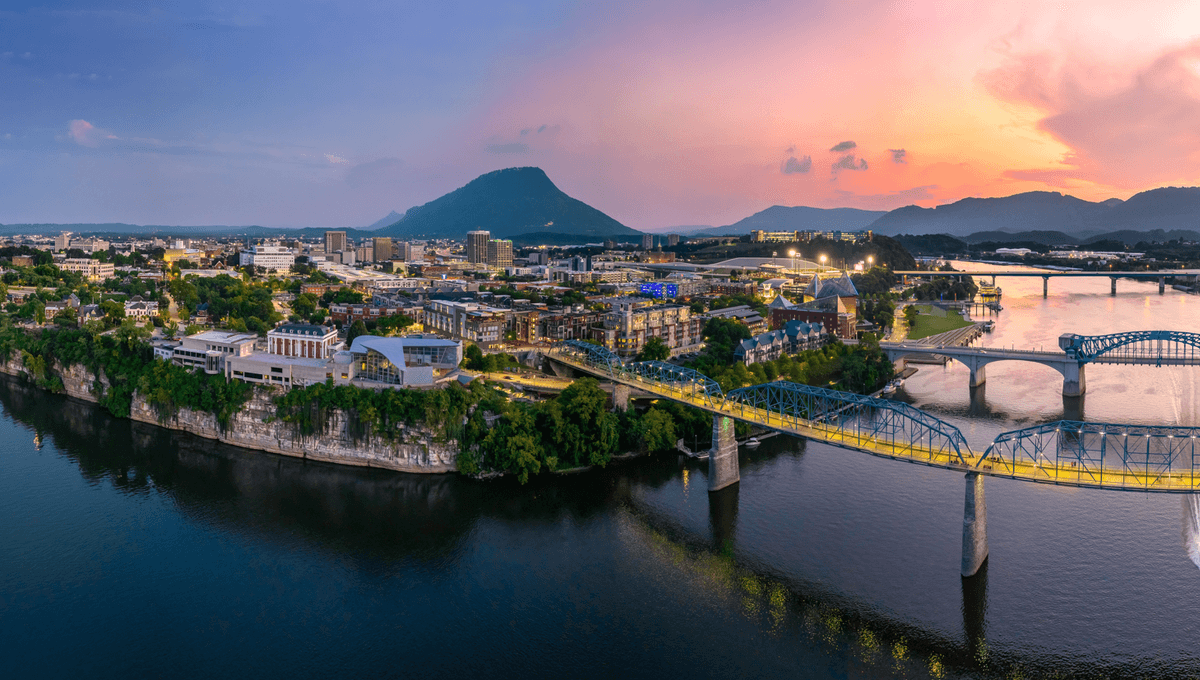
Once known as one of the smoggiest, most polluted cities in the US, Chattanooga in Tennessee has just been recognized as the first National Park City in North America.
In 1969, Chattanooga was named as “worst city in the nation for particulate air pollution” by the US Department of Health, Education, and Welfare. Known as the “Dynamo of Dixie” in its prime, Chattanooga had developed into a major manufacturing hub by the mid-20th century, with heavy industries, like iron foundries and steel production, driving its economy.
While this industrial boom brought prosperity to some, it came at a steep environmental cost. Thick plumes of smoke and industrial waste choked the air and waterways. Chattanooga’s geographical location, nestled in a valley and ringed by mountains, worsened the situation by trapping smog and pollutants in the city like a lid on a pot.
Economic hardship also gripped the city in the 1970s. Factories closed, skilled workers lost their livelihoods, and infrastructure crumbled. Chattanooga’s challenges were compounding.
Against the odds, the city has managed to make a recovery thanks to the work of the federal government, local leadership, and concerned citizens. Central to this transformation was a commitment to environmental renewal: the creation of expansive green spaces, investment in clean industries, and a renewed focus on sustainability helped reshape the city’s identity.
These efforts have recently been recognized by the National Park City Foundation, a registered UK charity launched in 2019, after an extensive review of the city’s recovery. Chattanooga becomes the third city to be named a National Park City, joining London (which was awarded the status in 2019) and Adelaide (2021).
“During our peer review we saw first-hand the extraordinary breadth and depth of engagement with the Chattanooga National Park City vision informed by outstanding experts in design, ecology, culture and arts. National Park City status introduces a new chapter for a city with a long history of revitalisation and renewal through connecting its unique landscape and the history of its people,” Alison Barnes, Trustee of the National Park City Foundation, said in a statement.
Bear in mind that National Park Cities are not National Parks, which in the US are federally protected areas designated by Congress and run by the National Park Service. Instead, the National Park City title is an honorary designation awarded by a not-for-profit organization that hopes to recognize cities that are actively working to create healthier, greener, and more sustainable living environments.
Mark Cridge, Executive Director of the National Park City Foundation, added: “It’s a huge honour to welcome Chattanooga as a full member of the National Park City movement. We’re excited to see how the city will use their new status to make Chattanooga a place where people and nature are better connected, and how they might inspire more cities to ask; what if our city was a National Park City?”
The National Park City Foundation aims to have at least 25 National Park Cities by 2025, so where could be next?
Source Link: The US Just Got Its First "National Park City" After Making A Green Bounce Back